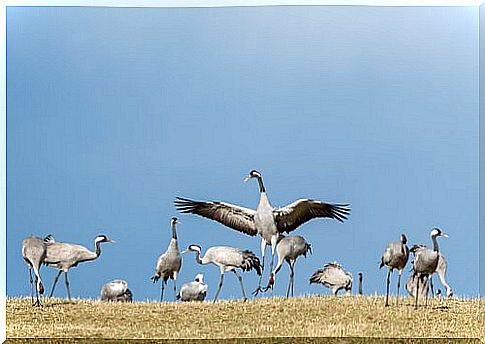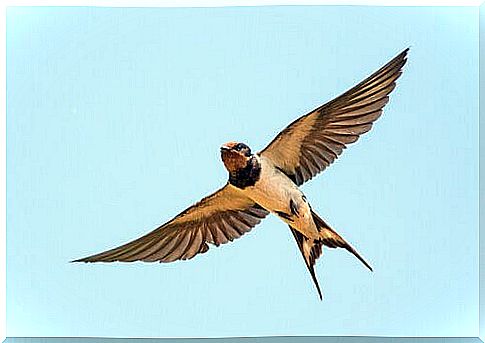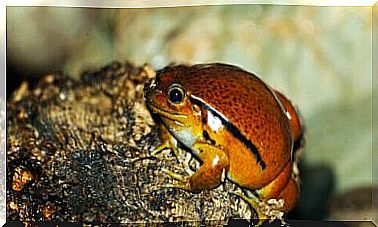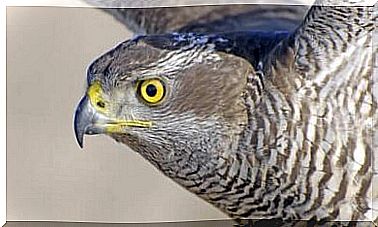6 Migratory Birds You Need To Know

Migrations are one of the most curious behaviors that can be encountered in the animal kingdom and, among the living beings that migrate, migratory birds travel the greatest distance.
These are animals usually not prepared for the cold, which therefore tend to move to warmer areas during the winter months. There are many species of migratory birds: below we present some of them.
The crane
Not everyone knows that the crane ( Grus grus ) is one of the migratory birds that travel the most. It is an animal that lives its reproductive season in northern Asia and Europe, and then moves to milder climates during the winter, in Eurasia or even in Africa.
This animal inhabits cold countries such as Ukraine, Finland, Sweden or Russia, reaching almost 100,000 specimens. When the summer ends, however, he emigrates to North Africa. Not only that, many specimens remain in Europe, in the South, especially in the area of the Spanish lagoons such as that of Gallocanta.
During the migrations up to 400 specimens move together. Once the migration is complete, however, the group breaks up, as they are not very sociable animals. The migrations of cranes are even mentioned by Aristotle and the Bible.
The swallow
The swallow is one of the smallest migratory birds, and it usually lives in open spaces, building its nests in granaries or even houses.
It reproduces throughout the Antarctic zone, starting from Eurasia up to North America. The only areas of the Antarctic territory where it is not present are the deserts and the areas in the far north. Unlike its close relative, the House Martin, it is much more common to find it in rural areas.
It spends winters in countries located in southern areas, such as India and much of Africa and South America and can also be found in Hawaii or Greenland because, thanks to its ability to learn even very long routes, it is able to cover a distance from South Africa to the United Kingdom.

The Beccacino
The Common Snipe (allinago paraguaiae), also known as the Paraguayan Snipe, is a very particular bird characterized by a beak that resembles a needle. It is part of the waterfowl family, but has little in common with the latter when it comes to migration.
In fact, the Beccacino is the bird of records: there are no other migratory birds capable of covering a distance of 11,000 kilometers without stopping. This animal is able to fly from Alaska to New Zealand, which is why during the months leading up to the migration it gains a lot of weight to make it through the long haul (just like salmon does). In practice, it manages to fly a week straight without interruption.
The Arctic tern
Also known as the long-tailed tern, it is a bird that lives in the Arctic. The crossing of this migratory bird is legendary, as it is the longest regular migration in the animal kingdom. The Arctic tern practically crosses the entire planet to reach Antarctica.
Adding back and forth, the Arctic tern travels 80,000 kilometers a year in order to enjoy the summer season twice within 365 days. In this way, this species ends up living almost always “kissed” by the sun, thanks to the continuous light characteristic of the Arctic regions during the summer.
The gray shearwater
This species is located in the Atlantic, Pacific and South Indian oceans. When its breeding season ends, around April, it makes a circular migration to reach the subarctic waters during the summer.
This species migrates individually and can travel distances of 900 kilometers per day. Its migrations are not the longest, even if they cover the very respectable distance of 14,000 kilometers.
Additionally, specimens traveling from Alaska to New Zealand travel nearly 70,000 kilometers. If we take into account the great longevity of this bird, which lives on average 50 years, the older specimens can boast a migratory distance of eight million kilometers.
Greater sandpiper
This species belongs to the group of water birds and lives in the Arctic. Its migratory routes are not yet fully known, but it seems that every summer it travels to Tierra del Fuego, resting and feeding for months before embarking on the journey.
This species is famous for breaking several records and for representing one of the great curiosities of the volatile world. After more than twenty years of study on the species, we have seen how it covers a distance equivalent to that which exists between our planet and the moon. Although several species are believed to travel greater distances, the case of B95 (this is how this animal is identified) is unique in history.









